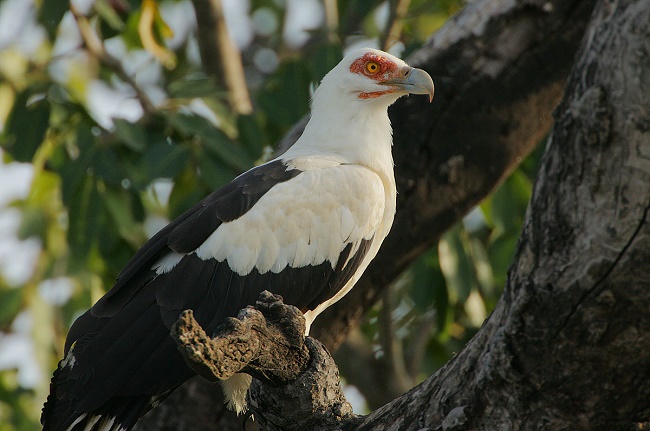The palm-nut vultures are becoming more prominent in the folklore of wildlife utilisation as remedies to perceived physical and spiritual needs of devotees in Nigeria. The fondness for the species among traditionalists is rapidly growing into a business network fortified by spiritual beliefs and economic incentives.

Consequently, the birds, also known as the vulturine eagles, are therefore steadily being consumed by the same belief-based systems answerable for the near collapse of the once boisterous populations of the hooded vultures. Local merchants and traditionalists who mainly refer to the bird, howbeit, correctly, as an eagle are apparently unaware of the vulturine characteristics of the bird that placed it among species of the old-world vultures.
Thus, the often-weird expressions and distrust whenever experts on conservation outreaches and surveys describe the birds as a species of the vultures. Popularly referred to as “Oshin” among the Yorubas, the bird is presumed to be portent as a spiritual “road opener” for clients across all works of life. Oshin linguistically implies “to open.”
With a global population less than 250,000, the species has continued to receive unevenly lesser and dispersed commitments when contrasted with the other old-world vultures having comparable population threshold. This perhaps is connected to the speculation of triviality affixed to the birds since they are deemed to perform less pronounced ecological roles, coupled with the with few persuasive facts to canvass supports relative to the hooded vultures.
More so, most requests for proposals have always structured their concepts around the popular IUCN list of threatened species as one of the core project selection criteria; thereby making it impossible to activate a bilaterally enabled local system of supports for the species. These and more are causatives to the near absence of projects devoted to the African Palm-nut vultures in Nigeria.
The verdict of population stability often ascribed to the species will scarcely hold for Nigeria following recent evidence of increasing presence of the African palm-nut vultures, relative to those of the hooded vultures, in some wildlife markets of Nigeria. With the major election year fast approaching, local demands for the hooded and Palm-nut vultures could witnessed a surge as seen with the past electioneering epochs.
The scanty attempts to conserve the species are fueled by the misconception vetted by top-notch literatures limiting threats to the vulturine eagles to habitat modification only. The misconception is a disservice and an illusion that could defer early conservation interventions for the species.
The practice of destructive wildlife utilisation is folk medicine and art is rooted in the traditional history of mankind. Such tradition should, nevertheless, only be laid on the foundation of sustainability, else the tradition collides with nature and becomes conquered.
Nigeria needs, therefore, an internal procedure for wildlife risk assessment as a basis for stimulating early undertaken for at-risk species, especially where global ranking is at variance with the regional wildlife experience. With the hooded vultures fast disappearing, we cannot afford another loophole and/or risk an alternative in the vulturine eagles given the spiritual consciousness that often accompany major election periods in Nigeria.
By Stephen Aina, Nigerian Conservation Foundation
